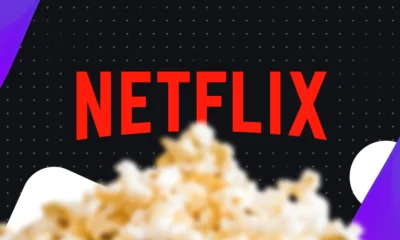Well, friends, it’s that time of year again. If you’re a retailer, I hope you’re hanging in there, all your campaigns are going according to plan, and the screaming-down-the-hall moments are few and far between.
This also is the season when anyone with a blog, a column or a webinar will start predicting what will happen in marketing in 2023. I’m not immune to that, but I’m also honest enough to admit nobody really has a clue right now.
There’s so much we don’t know about what will happen in the next 12 months. One thing is for sure: We definitely can look forward to many twists and turns in the online space and the real world — again.
So, instead of predicting, I’m going to look at what marketers should remember as they plan for 2023. I hope my insights will give you some direction, help you set some goals and put you in the right frame of mind in the next five minutes before somebody comes down the hall to request another Black Friday email campaign.
A global recession is coming
No matter what American politicians say, a recession isn’t just a U.S. concern. It’s happening everywhere. It poses another challenge for email. But email can rise to meet it, just as it emerged as a winner in the COVID-19 pandemic.
I’m a big believer in staying informed whether it means reading marketing, economic and political news or keeping an eye on the five screens in my office, each of which streams different information. So I’ve been on top of news stories reporting that some companies are already pulling back some ad spend. Others are investing in processes now to get ahead should we hit recessionary headwinds.
Because email proved its value in the pandemic, I don’t expect email budgets will get eviscerated to fund other channels. But we’ll test the concept that email is still recession-proof.
That doesn’t mean email will emerge unscathed. But we email marketers should get ready for a different kind of challenge. Companies could go back to their pandemic tactics, in which they invested in email to keep customers informed and build authentic relationships. Or they could revert to their business practices in the 2008 recession and just discount everything in a mission to save revenue targets.
We’re dealing with a lot of uncertainty right now. We could be in a recession that in some parts of the world doesn’t even look like a recession because of high job growth, even with a higher-than-normal inflation rate.
So now we have to look at how email can live up to its recession-proof reputation. Our twin challenges will be the evolving state of the global economy and how we can adapt email to survive.
The email channel itself will survive. What remains to be seen is whether we can retain the primacy email has gained.
Dig deeper: 5 email marketing lessons learned in the pandemic
Segmentation will help increase revenue from inflation-weary customers
Consumers pulled back on spending during the pandemic. Now, inflation is driving similar cutbacks. Reduced consumer spending puts even greater pressure on email marketers to perform.
Retailers are responding to their bargain-hunting customers by launching holiday campaigns even earlier this year. I saw many campaigns in early October that I would normally expect to see closer to November.
Consumer spending predictions are all over the board this year, too. The most optimistic say holiday spending will rise 4% to 6% over 2021, while others expect consumers will either hold the line or spend less.
I expect retailers will pull the usual levers to capture more holiday spending — heavier discounting, higher email frequency or some other tactics. But instead of pulling on those levers indiscriminately, marketers should rethink and revise their list segmentation to keep revenue flowing reliably.
Segmentation represents an untapped market across the board for motivating and incentivizing consumers to spend their money with you instead of your competitors.
Segmentation comes into play with the customer data platforms (CDPs) and advanced analytical tools. Email marketers can use these tools to fight both recession-driven budget cutbacks and reduced consumer spending.
Use what you learn about your customers — what works and what doesn’t — to support requests for resources to support segmentation and win higher priority in the marketing tech stack.
Although marketers worldwide might encounter a global recession in 2023, lower consumer spending could finally force us to become smarter marketers, not just “more” marketers.
Get MarTech! Daily. Free. In your inbox.
The pressure will be on CDPs to prove value
Customer data platforms, or CDPs, have been around for a while, but they’re just now moving into the reach of middle-level brands and full implementation at the enterprise level. But we still don’t know whether they’re the savior for data-driving marketing or the latest shiny object.
In 2023, I expect we’ll see the proof point for CDPs and whether we as email marketers can use them to transform our email campaigns into messages that elevate the customer conversation.
Vendors have sold CDPs as the gateway to customer intent, purchase propensity and data orchestration. Next year, we will see whether CDPs bridge the gaps between data lakes and CRMs, resulting in more intelligent marketing and boosting messaging automation, targeting and personalization.
But this move also could end up shifting priorities away from email. Historically, email has been stuck at the far end of the investment dinner table, waiting to see what’s left on the platter when it finally reaches us.
We might learn that CDPs do give us easier access to data for segmentation and personalization. Or we could find out that the money companies spend on installing them is wasted without the data, technical structure or know-how to manage them.
Dig deeper: How to manage email addresses in a customer data platform
Martech stacks will get a lot more scrutiny
This year, my agency was insanely busy working with both long-term and new clients on their tech stacks. Not just their email platforms, but all of their adjacent and connected systems.
Many of these clients were unhappy with their technology and asked us to find new vendors or move to new ones.
We all know how the pandemic accelerated digital transformation. Your tech stack might be a casualty if it hasn’t kept up with the changes. I heard clients say, “We aren’t agile enough.”
Or, “This platform doesn’t help make us smarter.”
Even, “This platform isn’t complex enough for all of our needs now.”
Some companies outgrew their systems, too. The pandemic forced them to react faster and communicate better with customers, employees and stakeholders and forced many to push their systems beyond their limits.
Today, many of our clients want technology that’s better, faster, more complex and more capable to meet their needs because they have evolved and need support that can meet them where they are now.
I expect more companies will examine whether they have the right technology and look to see what else is out here and what they can get to meet their new demands.
As part of this re-examination, we also will see companies using more of the technology they’re already paying for.
Maybe you saw Gartner’s study that found companies use only an average of 42% of their tech stack capabilities, a figure that’s actually down from a slightly less dismal 58% in 2020.
When I worked at Responsys, we found platform usage was actually closer to 10%. Back then (I’m older — “then” was 2007), marketers didn’t know how to use all the advanced features, many of which are standard equipment today.
If you’re dissatisfied with your tech stack, figure out whether it truly doesn’t meet your needs anymore or you just haven’t used all of its capabilities.
Before you start looking for new tech providers, go to your vendors and ask them to show you their latest demos. They’ll be happy to do it. Challenge your providers to show you what you should be using but aren’t yet. You’ll understand your tech capabilities and limits much better.
Dig deeper: The secret to building a useful martech stack
Looking to the future
As usual, I could be full of crap. Not about asking your vendors to audit your tech use — that’s always good advice — but for everything else, it’s what I’m seeing in my work, in the news and in talking with other marketers.
Plus, I’ve been through a recession, COVID, the birth and evolution of the internet, the Amazon wave, consolidation in the email space and so much more. That also informs my views about what will happen.
My focus is always on marketers and what they need to think about when planning for the coming year.
So let’s get back to it and knock out the rest of our 2022 plans. Don’t forget to celebrate with your team, whether by taking them out for drinks and dinner or supporting your remote staffers.
Tune in next month for my annual December motivation and year-end reviews!
Opinions expressed in this article are those of the guest author and not necessarily MarTech. Staff authors are listed here.





















You must be logged in to post a comment Login